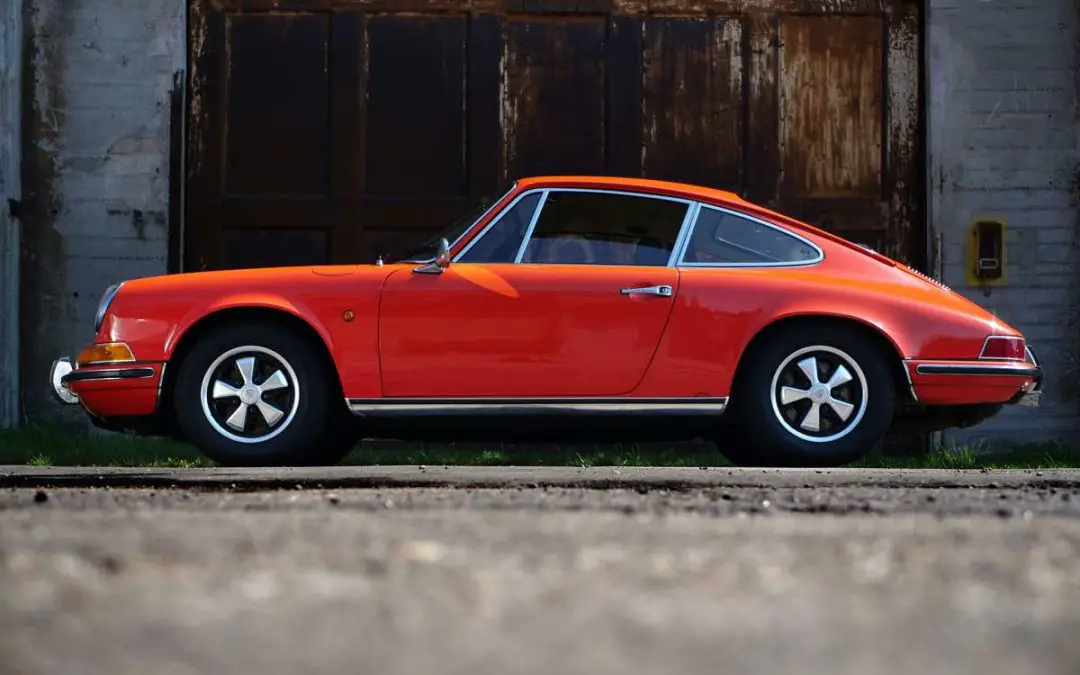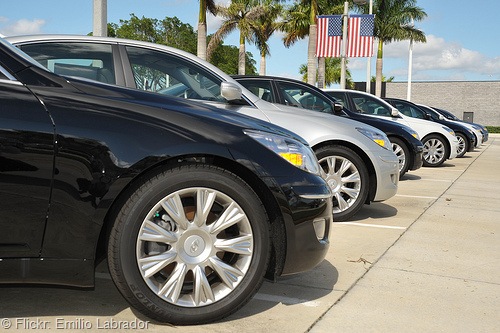If you are looking to buy or even sell a classic car you need to have a starting off point for price. Sure, there are factors such as work put into the car and other custom features, but either way a price has to be established. Thankfully there are several tools to help, and one of the best is the NADA guide.
History of NADA
The first NADA Guide was published by the National Auto Dealers association in 1933. It was published as a pricing guide for dealership subscribers. It has served as an important resource for dealerships to establish trade-in and retail values. The paperback guide later became a website which dealers continued to use. In 2008 NADA merged the consumer guide with the dealer guide under one brand.
In 2015 the company J.D. Power purchased the NADA Used Car Guide publishing Division. The NADAguide.com website now redirects to the J.D. Power website.
How Accurate are NADA Guides?
NADA Guides (Now J.D. Power Guides) are considered to be an alternative to Kelley Blue Book. There has been prolonged argument about whether Kelly or NADA is the more accurate guide. I will not go into that particular debate now and just agree that they are both useful tools.
To understand more, we must consider where NADA Guides originated. They were originally produced by the National Auto Dealers Association and so utilize actual information provided by dealers across the US. They have three elements that decide the quoted value of any car.
- Local demand in the market
- The current wholesale price
- The market value (calculated in real time)
The most intense emphasis is on the wholesale price without taking into account any defects in the vehicle. This can skew the price when the vehicle in question does have mechanical or cosmetic issues. The result is that NADA prices are typically regarded as on the high side since they do not take into account the condition of the car.
The true value of the NADA guide and Kelly's Blue Book, are to give you a starting figure so that you do not walk into a dealer with no idea where to start negotiations. Do not rely solely on these guides, the more data you have at your disposal, the stronger your negotiation position will be.
Something that you should be aware of is consumer bias. Those trying to sell their vehicle or part exchange it will typically have an overinflated view of the condition. The Kelly Blue Book, more so than NADA will likely be more realistic about the true condition of your vehicle. The NADA valuation pays little heed to the condition of the vehicle.
How Much is Your Cherished Classic Car Worth?
If you are planning to buy or sell a classic car, it is important to establish an idea of its NADA Classic Car Values before you proceed. You should not go into a negotiation unprepared. Especially if you are a classic car collector. Earlier I established that there were just three key factors in establishing the value of a car. However, with classic cars, it is more complex than that. Sales typically take place differently for classic cars.
- Private Sales represent 70% of the total transactions.
- Auctions account for a further 20%.
- Only 10% go through dealerships.
This makes the task of establishing a value much harder and it is probably a good idea to use several guides/tools, in addition to the NADA Classic Car Values to establish the value. One of these tools is the website, which are now part of J.D. Power.
By clicking through a menu to hone in on the exact make and model you want a valuation for, you will end up on a price page. For example if you had chosen a 1962 Alvis TD21 - 2 Door Drophead Coupe, you would end up with three valuations:
- Low Retail - $24,300
- Average Retail - $73,800
- High retail - $118,700
That's obviously quite a range of prices and can only give you a rough guide as to the value of your car.
What will Affect the Value of Your Classic Car?
Having got a range of prices form the NADA guide to classic cars, you have a wide spectrum of prices, now you need to establish more accurately what band your car belongs in. This will possibly be impacted by the following factors:
- Rarity
- Restoration quality
- Condition
- Demand levels
There are five classification levels typically used by third parties:
- Good for Parts - The vehicle no longer drives but may have a small amount of value for parts.
- It Could Be Restored - The car will be in poor condition, but it may be restored.
- A Good Vehicle - It still needs some work to get the maximum value
- It is Very Good - This car is in great condition and still has many of the original functional parts
- Excellent - This car is in perfect condition and is well restored or is in the original condition
Probably the most accurate guide to prices is how much a similar classification of car sold for at a recent auction.
You may not be at a point where you want to sell the vehicle, and possibly are wondering why all this is important to you. Well, you never know when you may change your mind and want to sell the vehicle. It may be that once you find the true value, you are tempted to sell it. However, a good reason why you should have an accurate idea of your cars value is so you can arrange appropriate insurance.
How Do J.D. Power/NADA Rate Vehicles?
J.D. Power who now own NADA Guides undertake a great deal of independent and unbiased reporting using detailed feedback they have acquired from verified buyers. They track user experiences during their first ninety days owning a vehicle, and then again for the first three years of ownership.
Having gathered all this data, it is categorized into different car types and they start the calculations. This produces the J.D.Power Consumer Verified Ratings. Each vehicle and year gets its own overall rating but also sub ratings on:
- Quality & reliability - making up 40% of the overall rating
- Driving Experience - making up 20% of the overall rankings
- The Resale Value - This accounts for 20% of the total
- Dealership Experience - This completes the ranking and accounts for 20%
Score Classifications from J.D. Power
Best (91-100)
These models are the highest rated of their category
Great (81-90)
They didn't quite make the Best rating but are higher that average.
Average (70-80)
These represent the vehicles that did as expected
Fair (0-69)
These are vehicles that were ranked below average and are in the lowest classification.
Using J.D. Power Guides Correctly
It is essential to remember that J.D. power is working on behalf of the auto companies, not the consumers. That does not mean the results are useless, they produce impressive research. The good thing about the guides is that you know the reviews and surveys were completed by verified purchasers, something that is not always the case in other industries.
The good news is that the results are getting more accurate than they were when J.D. Power took ownership of NADA , and the 2020 survey was far more detailed than previous ones.
This is a time of change for the NADA guides and J.D.Power, as bit by bit the name change is being rolled out. However, the reality is that the name NADA Guides is owned by the National Auto dealer Association and used under licence by J.D.Power. The reality is that behind the scenes the company is J.D Power and over time the NADA Guide name will disappear slowly.
You May Not Know This About The Guides
Did You Know that When Auto Manufacturers Use J.D. Power results in their Marketing, they have to pay a fee. Automakers also pay a subscription to access survey results so they can learn about the performance of rivals. This information has to be accurate if it is to serve any useful purpose. The results of the J.D. Power research are made into 14 detailed reports which are provided to the automakers. The small amount of information provided to consumers is just a tiny sample of the information the company has and supplies to the auto trade.
Does Anyone Else Publish Guidance on Classic Car Values?
I have explained how J.D Power (Formerly NADA) operate. You may be wondering if anyone else offers the same sort of services for classic cars. Well, there is another source of information.
Hagerty is an insurance company that specializes in classic cars. They also have their own Hagerty Price Guide which is published three times a year. On the surface this may seem to make it a direct competitor with J.D.Power. However, Hagerty do not use the same kind of surveys that are used by J.D.Power. Instead they use historical data, algorithms and the opinions of experts to influence their valuations.
A combination of reports from both companies would likely provide the most accurate price evaluations for classic cars. Their data is less connected to sales reports and more reliant on insurance quote data from the previous 12 months. Hagerty are confident that this system provides more useful information that the NADA Classic Car Values methods, something which the competitors obviously deny.
Sources:



